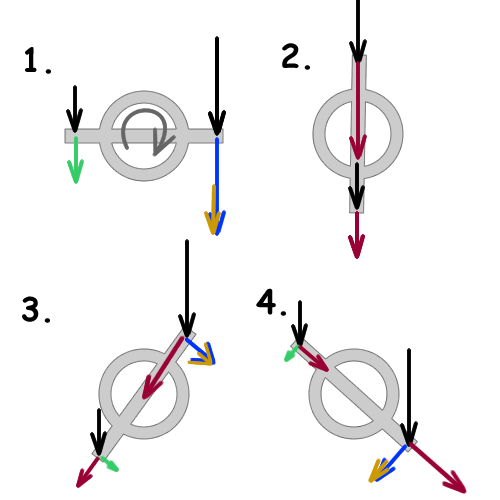Pedal Torque
Is there such a thing as perfect pedalling technique? And does anyone have it? The answer to both of these questions is probably 'no' but the answer to 'is there good technique?' is definitely 'yes' and answering the question 'what's the difference between good and bad technique?' is the objective of this page.
Consider the following four scenarios:
1. Cranks at 3 o'clock (horizontal). Pressing down on the front pedal will cause the cranks to rotate in the direction that we want them to go. Pressing down on the rear pedal will cause the cranks to rotate in the wrong direction. If the force on the front pedal is greater than the force on the rear then we'll get some rotation in the right direction. Any downward force on the rear pedal has to be overcome by downward force on the front pedal before any effort is actually used to propel the bike forward. Remember that.
2. Cranks at 6 o'clock (vertical). Theoretically pressing down on the top pedal won't cause the cranks to rotate but in practise it will because the position is unstable. Whether it causes them to rotate forward (to 3) or backward is anyone's guess. Pressing down on the lower pedal will not cause the cranks to rotate - in fact it will stop them.
3. Cranks between 1 and 2 o'clock. Pressing down on the top pedal will cause the cranks to rotate in the direction we want them to go - but only a small part of the force will contribute to the rotation.. The rest of the force is wasted. Pressing down on the bottom pedal will cause the cranks to rotate in the wrong direction - but again with only part of the force. As long as the force on the top pedal is greater than the one on the bottom rotation will be in the right direction.
4. Cranks between 4 and 5 o'clock. Similarly to 3, aproportion of the downward force applied to each pedal will affect the rotation, the remainder will have no effect.
|
If we look at the diagram opposite, we can understand why bad pedalling works (i.e. why anyone can ride a bike - or a stationary one at least). Pressing harder on one pedal than the other will result in the pedals turning in one direction or the other. It's easy to apply a large force to the front pedal through the 3 o'clock position, enough to turn the pedals to 6 o'clock. There will be enough momentum in the legs to get past the vertical after which it's easy to excert a larger downforce on the upper crank than the lower one. The momentum ensures that the rotation direction remains the same. |
|
In the diagrams above the direction of travel is left to right (as with the animations below). The black arrow represents applied force. The coloured arrows show the applied force resolved radially (in red) and tangentially (in blue and green).
Bad pedalling works because the blue arrows are longer than the green ones. The effective contribution is blue minus green, I've shown that in amber. The amber arrows represent the 'torque'.
Bad pedalling is bad because all of the force represented by the red and green arrows is wasted.
The aim of good pedalling is to modify the direction of the black force to minimise radial forces and maximise torque.
Pedalling Techniques.
Each animation below illustrates a slightly different pedalling technique. I've only shown the sole of the foot and the pedal. Technique isn't really the right word for the three actions at the bottom. All of them will lead to 'pedalling in squares' rather than circles under pressure.
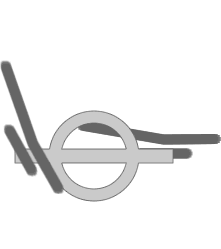 |
'Perfect' technique for riding on the flat. Notice the strong 'ankling' motion between 3 & 6 o'clock and the high ankle/heel during the back part of the stroke. |
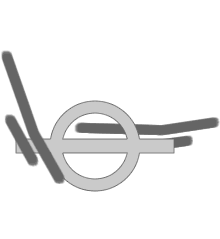 |
'Perfect' technique for riding up hill. Note how the ankle/heel is slightly dropped between about 2 & 3 o'clock but how the anking action gets the toes back down by 5 o'clock. |
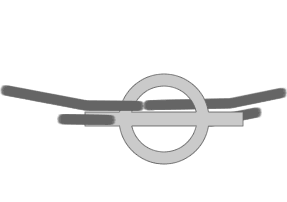 |
This is what happens when the ankling isn't quite right. The heel drops at the bottom of the stroke. Pedalling like this feels relaxed at low revs and can be reasonably effective up hill. At high revs it becomes jerky and it's difficult to remain aerodynamic under high load. |
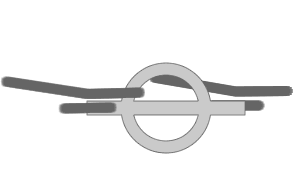 |
Here the ankles are contributing nothing. Pedalling like this will be very jerky through both top and bottom dead spots. |
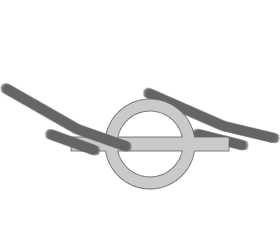 |
Toes-down pedalling with little or no ankling is quite effective on the flat and at high revs. It's very limiting uphill or at low revs and it puts a lot of strain on the thighs |
Pedalling photos
Here is a collection of photos that I've lifted from Graham Watson's Website (where there are loads more to look at) which really illustrate the pedalling action (click on each image to open in a larger window).
Ullrich
 ,
Hamilton
,
Hamilton  and co
and co  riding on the flat.
riding on the flat.
Indurain,
Olano,  Zabel
Zabel  and Jiminez
and Jiminez  climbing
climbing
Armstrong
 and Bartoli
and Bartoli  sprinting up hill
sprinting up hill
Tim Williams - November 2002
